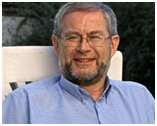T07: User-centered design and accessibility in real-world contexts
Half Day Tutorial
Simeon Keates (short bio)
Chair of HCI and Head of School, School of Engineering, Computing and Applied Mathematics, University of Abertay Dundee, United Kingdom
Peter Olaf Looms (short bio)
Chairman of the ITU-T focus group on audiovisual media accessibility and External Associate Professor at the Danish Technical University and the University of Hong Kong.
Objectives:
The objective of this tutorial is to introduce and explore both user-centered design and universal access and to show how they can be implemented successfully in corporate and research environments to deliver genuinely accessible and usable products and services. This tutorial will explore both the theory and its application, examining how real world constraints require the adaptation of theory to meet each new context of use.
Content:
This tutorial will cover the basics and introduce more advanced aspects of both user-centered design and universal access. We will explore how they are fundamentally related and also their application in real-world situations.
It is widely accepted in principle that both user-centered design and universal access are essential for the development of products that are both usable and accessible by the widest possible range of users. However, neither has achieved ubiquity in industrial practice. There are many reasons for this - technological, organisational and cultural. In this tutorial we will examine these barriers to adoption, where they come from and how they can be overcome.
We will look at how user-centered design and universal access have been successfully implemented in typical design management processes, with a minimum of modifications to existing design practice. Significant advances in overall usability and accessibility can be readily achieved and this tutorial will be illustrated by numerous case studies where this has happened. You will see how some companies and organisations have risen to this challenge and how others have failed. By examining from their experiences, you will learn to identify and avoid the common reasons for failure. This also gives a great opportunity for researchers new to the field to learn how real-world experiences often differ from the theoretical approaches taught in the classroom.
In particular, we will examine the role of the whole supply ecosystem in the delivery of products and services – an aspect that is often overlooked by many universal access practitioners.
The case studies will include the design and evaluation of both hardware and software, including kiosks, robots, websites and a focus on the next generation of television and broadcast media using broadcast, Internet and hybrid broadcast/Internet distribution. The UN agency ITU will have published its roadmap for accessibility actions shortly before the tutorial is held and the ITU Focus Group on audiovisual media accessibility provides a useful backdrop on the major issues. There will be interactive design exercises to allow you to put your design skills to the test.
Benefits:
Both instructors are highly experienced in designing, evaluating and delivering genuinely accessible solutions for a wide range of technologies and contexts. Participants in this tutorial will benefit from the theoretical underpinnings and practical examples and case studies that will be discussed. They will also have the opportunity to quiz both instructors about their experiences. The aim is for participants to understand the subtleties and nuances required to produce systems and products that meet the aspirations of universal access.
Target Audience:
The tutorial is designed for anyone with an interest in universal access and accessibility, from academic researchers to practitioners attempting to develop accessible solutions.
Relevant Links and Bibliography
- Web Accessibility Initiative (WAI)
- Inclusive Design
- CynthiaSays
- WAVE
- Vischeck
- JAWS
- Webanywhere
- Inclusive Design Toolkit
- British Standards Institute (2005) BS 7000 Part 6: Guide to managing inclusive design
- Patrick Jordan (1998) An introduction to usability. Taylor & Francis, London
- Simeon Keates and John Clarkson (2003) Countering design exclusion: An introduction to inclusive design. Springer-Verlag, London
- Simeon Keates (2007) Designing for accessibility: A business guide to countering design exclusion. CRC Press, Mahwah, NJ
- Jakob Nielsen (1994) Usability engineering. Morgan Kaufmann, San Francisco, CA
Bio Sketch of Presenters:

Professor Simeon Keates is Chair of HCI and Head of School of Engineering, Computing and Applied Mathematics at the University of Abertay Dundee. He was formerly an Associate Professor at the IT University of Copenhagen, where he lectured in the Design and Digital Communication study line. He obtained his PhD from the University of Cambridge, where he also worked as an Industrial Research Fellow in the Engineering Design Centre.
After leaving Cambridge, he moved to the US and joined the Accessibility Research Group at the IBM TJ Watson Research Center before moving to Boston and working at ITA Software as a Usability Lead designing interfaces for Air Canada.
Simeon also has an extensive history of consultancy, with clients including The Post Office (Royal Mail), the Social Security Administration, the UK Department of Trade and Industry, Danish Broadcasting Corporation (DR) and Lockheed Martin.

Peter Olaf Looms is Danish and was born and educated in the UK. He holds a Master’s degree from the University of Cambridge.
Peter has worked for more than 30 years on policy and strategy in broadcasting. Since 2006 this has included television and digital media accessibility. He was instrumental in setting up the DTV4ALL consortium that assisted the European Commission in promoting e-inclusion for digital television across Europe (2008-2011).
Peter is currently chairman of the ITU-T Focus Group on Audiovisual Accessibility that aims to produce a roadmap for digital media accessibility actions for the International Telecommunication Union by early 2013. He is involved in accessible media projects in Europe, China, India and Argentina.


